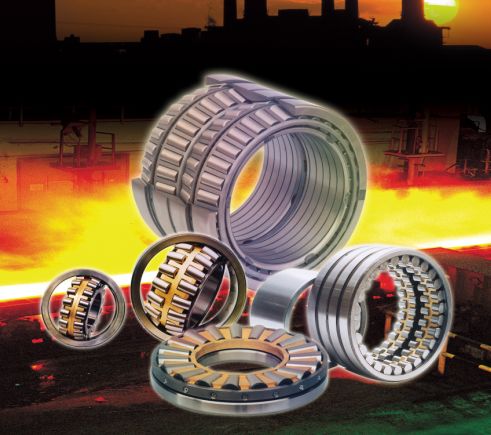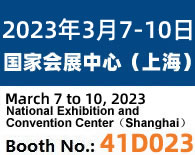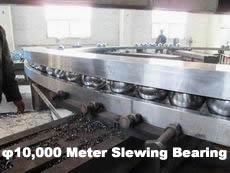
ROLLING MILL BEARING SELECTION AND APPLICATION
1.Rolling mill bearing types
Four-row cylindrical roller bearings
Double-row cylindrical roller bearings
Single-row cylindrical roller bearings
Double-row angular contact ball bearings
Single-row angular contact ball bearings
Four point contact ball bearings
Double-row double-direction thrust roller bearings
Deep groove ball bearings
Thrust full tapered roller bearings
Split cylindrical roller bearings
Spherical roller bearings
Four-row tapered roller bearings
Four-row tapered roller bearings(inch size)
Double-row tapered roller bearings
2.The accuracy and level of rolling mill bearings.
Rolling bearing can be classified by the tolerance and rotating accuracy gradeRadial bearings (except tapered roller bearings) tolerance class is divided into five levels- 0, 6, 5, 4 and 2, , the accuracy grades are from low to high order.Tapered Roller Bearing tolerance class is divided into four levels-- 0, 6X, 5 and 4, the accuracy grades are from low to high order.Thrust bearing tolerance class is divided into four levels 0, 6, 5 and 4, the accuracy grades are from low to high order.Specific tolerances and rotating accuracy grade. See GB/T307 standards.
3. The clearance of rolling mill bearing.
The bearing clearance means bearing is not installed (with no load), when a bearing ring is fixed ,and the other bearing ring relatively to the other, moves from one extreme location to another extreme position, the amount of movement,can be divided into radial clearance and axial clearance.Theory clearance minus the bearings installed on the shaft or the outer casing interference fit clearance (the bearing ring interference fit clearance caused by the productional expansion or contraction of bearings) -–is called "installation clearance."Bearings installed on machines rotating withstand certain load, the clearance called "work clearance."Typically, the bearing original radial clearance is greater than the work clearance; the bearing radial clearance has a significant impact on bearing life, temperature, noise and vibration etc. Therefore, to decide bearing radial clearance, must consider the following:1) Interference with the installation: the expansion of the inner and outer ring contraction leading to decrease clearance;2) Under the operating temperature, the bearing inner and outer rings of the temperature difference and related thermal expansion lead to clearance changes;3) In work, ball bearings clearance is close to zero under usual operating temperature, For roller bearings, should leave a certain radial clearance under normal operating conditions
4. Rolling mill bearing life and load capacity.
1).LifeUnder normal installation, lubrication, and maintenance circumstances, during the bearing operating process, as the bearing rings and rolling bodies contact surface subjected to repeated cyclic load, caused fatigue spallation, fatigue spallation is the main bearing failure modes, therefore, bearing life generally refers to the fatigue life. The so-called fatigue, means before a bearing ring (washer) or the material the rolling body appears the first signs of fatigue growth, a bearing ring (washer) relatively to the other bearing ring’s (washers) rpm.( Revolutions per minute).In practical work, some other damages will occur apart from rolling fatigue damage, such as: abrasions, burns, cracks, and corrosions and so on, they all may lead to bearing failure. These damages can be avoided through a good job of bearing selection, proper installation, lubrication and good sealing.
2).The calculation of bearing life.
For one or a group of roller bearings, under the same operating conditions, they are closely same bearings, the life expectancy is 90% of the reliable, commonly used materials and processing quality as well as conventional operating conditions related to life, called the basic rated life. Basic Load contains the basic dynamic load and basic static load. Characterization of bearings in rotating (speed n> 10 r / min), the carrying capacity is the basic dynamic load, when characterization of bearing is stationary or slowly rotating (speed n ≤ 10 r / min) ,the carrying capacity is the basic static load.Bearing basic dynamic load is identified under the assumed operating conditions. The load conditions: Radial bearing only withstands the pure axial load. In fact, bearing in most applications, often to withstand radial and axial load, Therefore, when calculating bearing life, need to convert the actual loads to the equivalent dynamic load –consistent with dynamic load conditions. Equivalent dynamic radial load is a constant radial load. Equivalent dynamic axial load is the center of a constant axial load. Under the same load, the roller bearings have the same life expectancy in the actual load work condition.
5.Rolling mill bearing lubrication and sealing.
1).the purpose and method of lubricationwhen bearings in operation, in order to avoid direct contact with the components surface, reduce the internal bearing friction and abrasion, improve the bearing performance, extend bearing life, bearings must be lubricated. Lubricant is an essential part in bearing operationin bearing applications, choose the right lubricant and lubrication method is very important. Bearing lubrication can be classified as grease lubrication, oil lubrication and solid lubrication.
Grease lubrication has the advantage of bearing, seals and lubrication facilities, simple structure, easy maintenance, grease hardly leak, can prevent water, gas, dust and other harmful impurities invade into bearing. Therefore, in general, grease lubrication is widely used.The advantages of oil lubrication can be used for heavy, high-speed, high temperature conditions and so on, oil has good fluidity. In some special circumstances, such as high temperature and vacuum conditions, also can use the solid lubrication method.
2).The importance and the forms of sealsIn order to maintain good bearing lubrication conditions and normal working environment, to keep the high performance of bearings, roller bearings must have the appropriate seal apparatus to prevent lubricant leakage and dust, gas, water, dirt or other invade into bearings. When select the bearing seal forms, should consider the following factors:
Bearing Lubricant types: the bearing work condition, the size of space; axis characteristics of the supporting structure, allowance of the angle deviation; sealing surface of the circular velocity; seal friction and the resulting temperature rise; cost etc.Bearing sealing generally can be classified as non-contact, contact, integrated approach. In addition, there are bearings with steel dust covers or seals.
6.The installation of rolling mill bearings.
1).the preparation before installationIn accordance with the installation of bearings, get ready to have the installation and measuring tools (as much as possible to use the special tools it requires) should also be prepared to have removal tools, in order to remove the bearing without harming and re-install the bearing—when inappropriate installed.
Should check the shaft and bearing size, shape and processing quality compliance requirements according to the drawing before installation. Clean the shaft and housing and other parts of the assembly surface, make sure there are no cuts or machining burrs left.
2).Installation(1) press-in installationPressed into the installation: General use of press-in machine, but also can make use of bolts, nuts, use of hand-hammer to install as the last resort.
(2) Heating InstallationHeating installation has oil heating and induction heating. Medium and large bearing with large amount of interference must usehot charging methods
2.2.1 Oil HeatingHeat the bearing in the oil, make it expand before install it on the shaft, this method does not have to add too much pressure, can be smoothly installed without damage to the bearings. But for grease filling sealed bearings, to prevent loss of grease or deterioration, can not be used.
2.2.2 Induction heatingInduction heating uses common AC power, when the induction coil is electrified, it will generate alternating magnetic field, temperature rises on the bearing inner surface caused by eddy current, when the temperature reaches a certain value, the power will go off, the bearing installation will start by then.
 
7.The dismantlement of mill bearing.
General bearings do not require dismantled under normal use. However, bearing in maintenance, replace parts, improper installation or when it has abrasions, it must be dismantled.Dismantlement should pay attention: Do not put pressure onrolling elements, cage, dust cover and seal, to avoid damage or deformation for these parts; do not directly use hammer to percuss, to avoid the ring fracture; the shaft or shell hole should coated with oil before disassembly, for easy removal.
Bearing dismantlement normally has two ways: hydraulic press machine dismantlement and induction heating dismantlement.1, hydraulic machine dismantlementWhen dismantle the bearing, put two-half washers under the bearing, Check whether the bearing is skew before adding pressure, and check whether it will injury people or damage the shaft surface when the shaft is pressed out. And then continue adding pressure until the bearing comes off from the shaft.2, Induction heating dismantlementIt is the same as the induction heating installation. It applies to dismantle the detachable large diameter bearings. Put the induction heater set on the inner ring when dismantling, and with the dismantlement claws stuck in the inner end device, the inner ring temperature will soon heat up after electrified, when the inner ring on the shaft start to loose, cut off the power, then start dismantling.
8.Rolling mill bearings operation and Maintenance.
1).OperationRolling bearings are high precision bearings, should be careful when using them, especially maintain bearings and keep its surroundings clean; avoid strong hit; prevent getting rusty; regular inspection; timely add lubricant.
2).MaintenanceTo make bearings have longer useful life, maximize its effectiveness; bearings must be regularly inspected and maintained. Any problems can be detected early, take appropriate measures before the bearing failure, thus reducing bearing failures causing economic losses on the production.Bearing during operation, need to frequently check the temperature and status through the noise and vibration test. When it is at static state, check whether the lubricant is contaminated, or deteriorated, the seal is good or not; remember the location of outer loading zone when dismantling, rotating the outer ring 900 when re-install it. Check inner and outer ring raceway, ball, and cage damage status when cleaning bearing, and if the surface has fatigue spallation, it shows that the bearing has reached life limit, should be replaced.
3).StorageBearings are coated with rust inhibitor and wrapped with rust-proof paper before leave factory. Preferably stored in room temperature is around 200C, relative humidity below 60% and non-corrosive material place, do not directly placed on the ground. Bearings can not be laminated stacked, must be in horizontal position. Long-term preservation if it is over anti-rust period (12 months), need to be re-cleaned and coated with anti-rust oil and re-pack again. Bearing in handling process, should uselifting appliance or pallet to prevent the bearing damages in the handling process.

